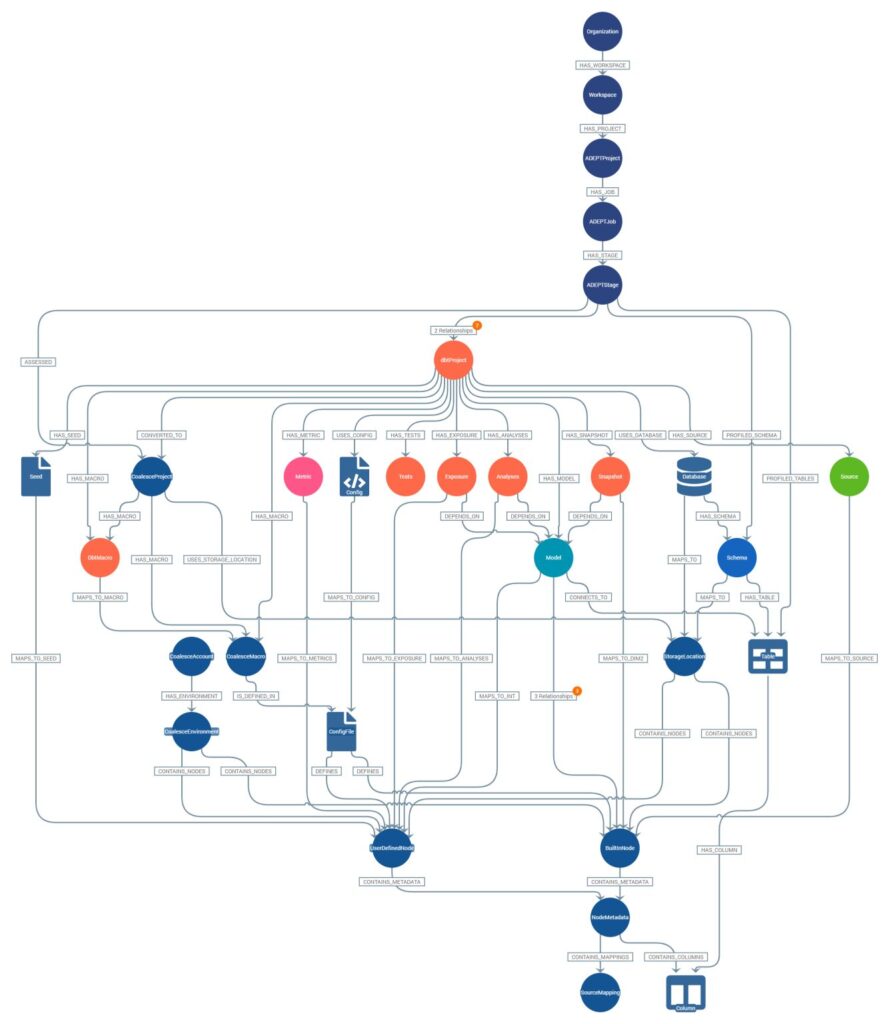Effective Data Governance
Picture an unruly horde of barbarians at the gate of your bustling empire. They’re trying to break in, cause havoc, spread mayhem. Now, replace the barbarians with cyber threat and you get the intensity of data-related risks your business is surrounded with every day.
Each year, damages resulting from data breaches reach a staggering $6 trillion globally, a figure large enough to be the world’s third-largest economy. In this digital battlefield, your armory is Data Governance – a calculated and tactical approach to protect, manage, and utilize your business data. It’s no longer an elegant option, but an indispensable shield your business needs to survive and prosper.
But how do you wield that shield effectively? Trust us to guide you through the complexities of data governance, without the usual industry jargon. It’s time to soldier up, embrace a strategic data governance framework, and charge head-on against that brewing cyberstorm. Your business deserves no less.
Understanding Data Governance: Protecting Your Business
- A solid foundation of effective information management
- Critical pivot between data chaos and optimized business decisions
- Poor data governance equates to risking business sustainability
Definition and Importance of Data Governance
What’s drawing countless gallons of corporate sweat these days? You’ve guessed it, data governance. It’s not merely a fancy tech term – rather, it’s a structural process ensuring information accuracy, availability, reliability, and accessibility across an entire organization. Framed by policies, toiled through procedures and crowned by standards and metrics, data governance fundamentally is the blueprint of the data universe.
While you might question the fuss around data governance, it’s indisputably the pivot on which prosperous businesses outbalance the data chaos. Secure, timely, high-quality data translates to confident, faster decisions. Data governance rinses off the grit from the raw data, so when the gold shimmers, you’re ready to seize actionable insights. The extent of its importance is quipped as – an enterprise without data governance is like a city without traffic rules. It’s doomed.
The Role of Data Governance in Business
Data in business is like oil to an engine – acting as the indispensable fuel driving all operations. Data governance, then, is the mechanic ensuring this fuel is pure, rightly directed and doesn’t corrode the engine itself. It anchors data management, maintaining operational efficiency, consistency and security across all data-related tasks – data integration, quality, architecture, privacy, and more.
Apart from overseeing admin roles, data governance is the vanguard defending businesses from potential data disasters. By formulating clear policies and procedures, it ensures data compliance, reducing the risk of non-adherence penalties. It promotes data transparency, encouraging a culture of trust within the organization. Data governance is business governance at its heart. So, no matter how daunting, embracing data governance is a non-negotiable to thriving in the digital age.
The Impact of Poor Data Governance
Cautionary tales have been spun around businesses who fell into the dreaded pit of poor data governance. When data is murky, disjointed, poorly monitored or worse, susceptible to breaches, business operations stutter before crumbling. FOR INSTANCE, a report by Gartner predicted that by 2022, 90% of corporate strategies will be rendered ineffective due to inadequate data quality. This highlights the harsh truth that poor data governance often leads to failed business strategies and wasted resources.
Poor data governance may induce a loss in customer trust, stakeholder confidence, and market value. It could lead to regulatory penalties that tarnish the corporate image, or even trigger legal battles that drain resources. Baked in this crucible of danger is the ultimate truth: weak data governance isn’t a nuisance. It poses an existential threat to businesses, and no business, small or large, can afford to overlook it.
Building a Robust Data Governance Framework: Your Business's Safety Net
From knowing data governance basics, transition your lenses to focus on the construct of a working framework.
- Get to know what influences a data governance framework
- Discover what makes a data governance framework strong
- Uncover the steps needed to create an effective data governance framework
What is a Data Governance Framework?
A data governance framework is a structured, organized set of guidelines and procedures that ensures a company’s data is accurately managed and protected. This model acts as the skeleton of your data governance strategy, providing the outline for how your organization will handle its data.
A strong framework is critical – it aligns all pertinent parties to the same aim: excellent data governance. It promotes accountability, efficiency, and effectiveness in handling data, making it a vital cog in any data-driven business.
The Core of a Data Governance Framework
At the heart of the framework lie policies, procedures, and standards. Policies establish what needs to be done, while procedures and standards show how to do it. Without clear direction and guidance, data can easily become disorganized and mismanaged. But with a well-defined framework, businesses can avoid potential data risks and capitalize on the data’s value.
Key Components of a Data Governance Framework
A robust data governance framework isn’t constructed in one stroke. Several key components should be incorporated into your framework.
- First, data governance policies. These define the roles, responsibilities, and accountabilities for the organization’s data.
- Second, a data inventory. This includes data definitions, data lineage, and metadata management.
- Third, data quality measures ought to be in place to maintain the integrity and accuracy of the data.
- Fourth, you need data security components, including access controls and encryption strategies to protect your data from unauthorized access or breaches.
The Nerve Center: Data Governance Policies
Policies involved in data governance determine how your organization will manage and handle its data properties – a crucial part you cannot afford to compromise. From identifying stakeholders to defining their duties, these guidelines act as the nerve center orchestrating other components.
Steps to Develop a Data Governance Framework
Creating your own data governance framework doesn’t have to be a complicated process. Here’s a roadmap to get started.
- Establish a data governance team. This team will be responsible for developing, implementing, and managing the framework.
- Develop data governance policies and procedures. Determine who has access to certain types of data, how data is classified, and how data should be handled and stored.
- Implement data quality measures. This ensures that your data is accurate, reliable, and useful for decision-making.
- Install data security measures. Establish rules on who can access the data, how it is protected, and what happens if there is a security breach.
While building your data governance framework may seem like an enormous task, remember: Every step you take towards better data management is beneficial. As your framework takes shape, you are not merely compiling guidelines and rules—you are forming the safety net of your business’s most valuable asset: its data.

Ensuring Data Quality: The Backbone of Your Business
- Grasp the importance of data quality in data governance
- Understand the role of data quality management in building robust data governance
- Discover practical ways to bolster data quality in your organization
If the previous section was your business’s safety net, consider this section as the robust frame that supports that net. With a comprehensive understanding of data quality, and its integral role in data governance, your business can operate with improved efficiency and reduced risk.
Comprehending the Concept of Data Quality in Data Governance
Data quality isn’t just about collecting huge volumes of clean, refined data. Instead, it’s an integral aspect of data governance that ensures your data is accurate, consistent, and relevant. Think of fuel quality in a race car. The car, like your data governance initiatives, can only function optimally with high-quality fuel or data.
Raw data is often unrefined and unstructured, marred by inaccuracies and inconsistencies that can undermine its value. So, how exactly does refining this ‘raw material’ impact data governance? That’s where data quality management steps in.
Unraveling the Role of Data Quality Management in Data Governance
Data Quality Management (DQM) isn’t just a fancy term. It signifies the processes, methodologies, and technologies that transform raw, unfocused data into a coherent, accurate, and valuable business resource.
The significance of DQM lies in the relationship shared between data quality and data governance. Like a well-oiled machine, where each part performs a unique function but works in unison for the overall goal, DQM operates under the umbrella of data governance, helping the broader protocols deliver substantial and valuable insights from data.
Practical Steps to Bolster Data Quality in Your Organization
Unless data is of high quality, it’s like a puzzle with missing pieces; it doesn’t present the full picture. Here are some solid, actionable ways to ensure quality data feeds into your data governance framework.
- Implement Data Quality Metrics: Having a set yardstick for measurement can help ensure consistency and accuracy in data collected.
- Regular Data Audits: Regular scrutiny and validation of data for accuracy and relevance can significantly boost the integrity of your data.
- Employee Training: Your data is only as good as the people handling it. Equip your staff with the necessary skills to understand and manage data effectively.
In a world where data is recognized as the ‘new oil’, and data governance as the ‘refinery’, the importance of maintaining data quality can’t be overstated. This way, you’re well on your way to tap into the true potential offered by robust data governance. But, to translate this potential into tangible benefits, crafting a comprehensive data governance strategy is key – which we’ll tackle in the next section.
Crafting a Data Governance Strategy: A Roadway to Success
- An understanding of why businesses must incorporate data governance strategies
- Gleaning key facets that constitute a victorious data governance strategy
- Gathering knowledge on how to generate a functional data governance blueprint
From enhancing data quality, attention now shifts towards creating an efficient data governance strategy. This is architecting a fortress around your core business intelligence, thereby shielding it from potential threats.
The Need for a Data Governance Strategy
Organizations are becoming increasingly dependent on data, throwing light on the mounting importance of a sturdy data governance strategy. This blueprint doesn’t merely safeguard your data from breaches, but also enhances operational efficiency, aids in compliance with regulatory mandates, streamlines data management, and finally, transforms data into a profitable and strategic business asset. It’s sweeping up all the missing puzzle pieces and fitting them together to present a picturesque view of your data landscape. Regrettably, lack of a sound strategy leaves a business swimming in uncharted waters, defenseless against impending data storms.
Key Elements of a Brilliant Data Governance Strategy
A reliable data governance strategy stands strong on a few crucial elements which form its foundation.
Data Ownership
Data governance is not a one-man show, distributing the responsibility across the organization is the name of the game. Assigning data ownership to specific departments and people within your organization puts them in control yet makes them accountable for their own data.
Data Quality Standards
Establishing data quality standards across your organization ensures everyone is working from the same playbook. Resistance to information entropy keeps the data clean, dependable, and decision-ready.
Data Access and Security Measures
A discriminating yet appropriate access model that provides the right people with the right access enhances security, increases efficiency, and maintains compliance.
Steps to Initiate a Data Governance Strategy
A rewarding strategy pivots around key steps aimed at establishing ownership, sharing accountability, and encouraging compliance.
Assemble a Steering Committee
Begin with a core team of key stakeholders from different departments who understand your data needs and can effectively drive the strategy.
Develop a Data Governance Framework
A comprehensive framework that includes policies, procedures, standards, and guidelines creates a robust structure for data handling across the entity.
Set Tangible Goals and Monitor Progress
Unambiguous and measurable goals guide the strategy in the right direction. Continual progress tracking aids in course adjustments if required and ultimately dictates your strategy’s success.
Remember, data governance isn’t a one-and-done process – it requires perpetual attention, adjustments, and improvements. With a proactive strategy in place, steer your business data towards becoming an invaluable asset.
Leveraging Data Governance Tools: Simplifying Your Journey
- Management of business data becomes easier with data governance tools.
- Key features make some data governance tools more efficient than others.
- Several top-notch data governance tools are currently dominating the market.
The role of data governance tools
Data governance tools help enterprises manage the company’s data and improve its quality. They offer a direct approach to keep track of data that your business regularly deals with. Knowing what information your business holds and what it can do with this knowledge can reshape your decision-making process.
Data governance tools are all about providing a structured and trusted foundation for strategic data-related initiatives. They play a pivotal role in establishing rules and guidelines for data use, and they ensure that the enforced rules are routinely followed.
These tools aid businesses in improving their data quality, which in turn decreases risks and enhances operational efficiency. Compliance with laws and regulations also becomes less of a hassle, as data governance tools offer capabilities to manage data privacy and protect sensitive data.
Features to look for in data governance tools
When choosing a data governance tool, it’s important to examine the features that can make your data governance journey simpler and more beneficial.
A good data governance tool should include features focused on data quality management, like detecting and cleaning inaccurate or redundant data. Other important features could be metadata management, which provides business context for data for improved data understanding and usage.
Capabilities for managing data privacy and security are also critical. With the increasing regulatory landscape, businesses require tools that streamline data compliance and decrease the risks associated with data breaches.
Also, consider features that offer data lineage visibility. Understanding where the data is coming from and where it is going can be instrumental for business-driven decision-making. Read more on data lineage here.
Top data governance tools in the market
There’s a bevy of data governance tools available in the market catering to different business needs.
One notable tool is our premium partner technology, Collibra. They stand out for their ability to manage and enhance data quality, ensuring businesses have a structured and trusted data foundation. Collibra’s direct approach in tracking and utilizing data reshapes decision-making processes, offering crucial capabilities like data privacy management and sensitive data protection.
Other tools like Alation, Informatica Data Governance and IBM’s Infosphere, also offer robust solutions The key to effective governance lies in finding a tool that aligns with your unique business needs and infrastructure.
While features and capabilities remain paramount, businesses must also consider factors like user-friendliness, support, and pricing when choosing a tool. And remember, the best data governance tool will be one that aligns well with your business needs, goals, and existing infrastructure.
Implementing Data Governance Best Practices: Ensuring Long-Term Success
- Solid data governance is crucial in protecting your business.
- Discerning and implementing top data governance best practices is a must.
- Learn from entities that have seen success in data governance implementation.
With the right tools in place for data governance, you’re now well-positioned for a successful journey. However, it’s time to leverage best practices that would ensure long-term success.
Importance of Best Practices in Data Governance
While data governance tools simplify processes, it’s the best practices you engrain in your organization that solidify your defenses. A set of well-defined best practices can lead to more consistency, improved data quality, and reduced risk of data breaches. Every data-driven decision made will then be based on accurate, reliable data.
Consider these best practices as the foundation of your data governance strategy, setting the stage for your grand act – ensuring enduring success. And remember, even the longest journeys begin with a single step: imbibing a culture of data governance.
Top Data Governance Best Practices to Follow
Ever noticed how the best sports teams have their fundamentals down to a tee? Similarly, successful data governance starts with nailing down the basics. Let’s throw light on some of the most crucial best practices.
- Clear R&Rs: Clearly defined roles and responsibilities can alleviate potential conflicts and confusion.
- Consistent Data Definitions: Consistent data definitions across the organization keeps everyone on the same page.
- Data Quality Assurance: Regular audits can keep data quality intact and raise alarm to significantly harmful data inaccuracies if any.
- Data Security: Implement strict access controls, data masking, and encryption to secure your data.
- Timely Training: Equip your team with the necessary tools and training to manage and protect your data.
Case Studies on Successful Data Governance Implementations
While knowing the road ahead is useful, real-world examples often serve as the best guides. Let’s glance at a few case studies where data governance implementation led to success.
- A Financial Services Giant: This enterprise realized earlier on that data was their biggest asset. However, their lack of regular audits and inconsistent data definitions led to issues. After implementing rigid best practices, they noticed fewer conflicts and improved data quality.
- A Health Care Provider: Faced with privacy concerns, this provider implemented strict access controls, data masking, and constant security audits. This not only secured their data but also built strong trust amongst patients.
These examples only reiterate one thing – strong data governance is a driver of success in today’s data-driven world.
Don’t just read about these best practices. Own them, implement them. Ensure you’re not only surviving in today’s data-oriented business world, but also winning.
A Safer Tomorrow Begins with Data Governance
Between effective policies, consistent enforcement, and ongoing data education, data governance brings unparalleled strength to the security sphere of your business. It’s the frontline defense in protecting your most valuable asset—your data.
Having witnessed the significance of data governance, it’s now time to start building a resilient system that can stand against data threats head-on. Initiate by conducting a robust data audit. Understand your strengths, spot the vulnerabilities, and kick-start the path to securing your valuable data.
Have you evaluated the current state of data governance in your enterprise yet?
Remember, the steps you take today towards data governance, pave the path for your company’s sustainable growth. There’s no better time than now to reinforce your data defenses.




